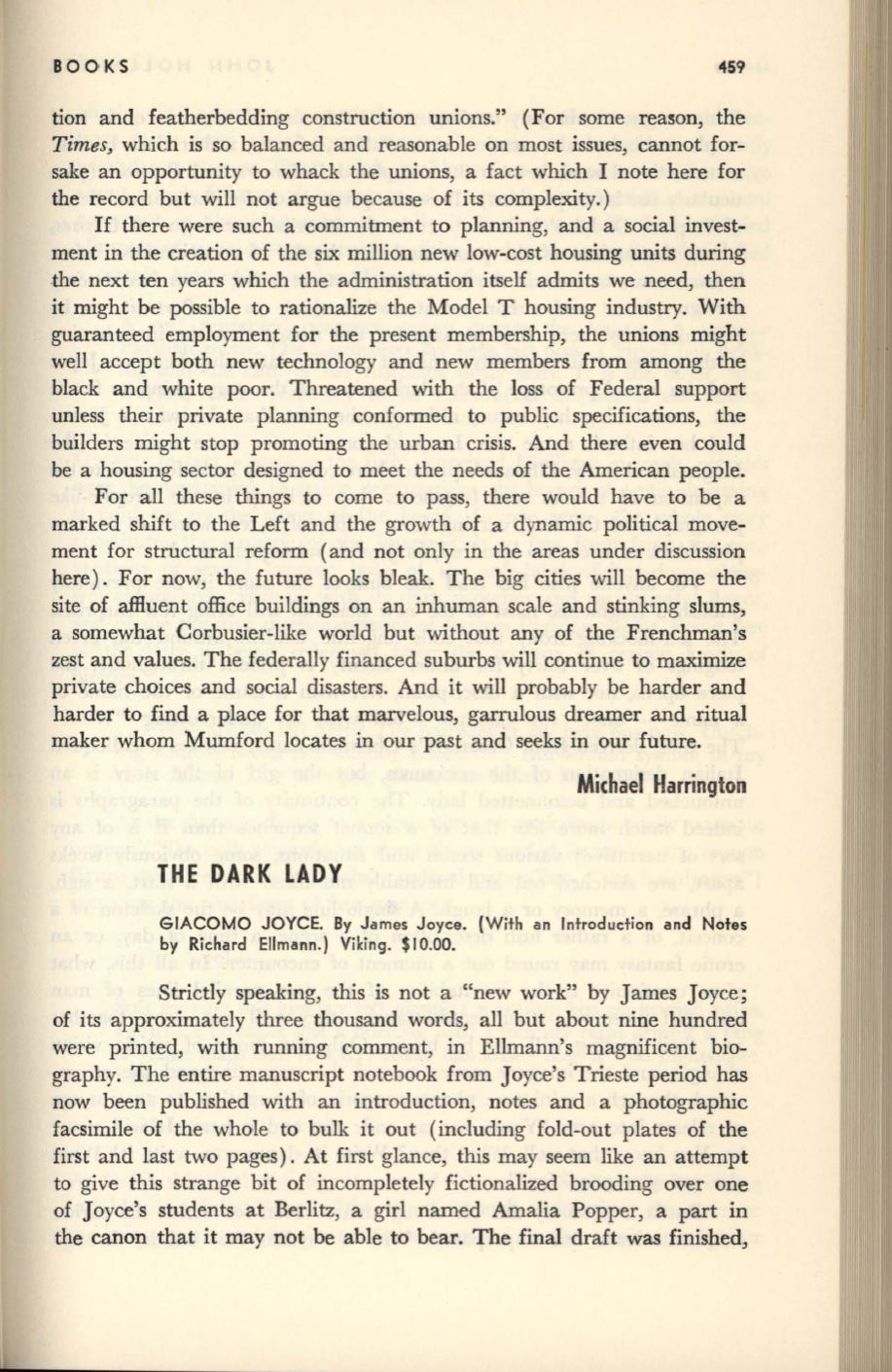
BOOKS
459
tion and featherbedding construction unions." (For some reason, the
Times,
which is so balanced and reasonable on most issues, cannot for–
sake an opportunity to whack the unions, a fact which I note here for
the record but will not argue because of its complexity.)
If
there were such a commitment to planning, and a social invest–
ment in the creation of the six million new low-cost housing units during
the next ten years which the administration itself admits we need, then
it might be possible to rationalize the Model T housing industry. With
guaranteed employment for the present membership, the unions might
well accept both new technology and new members from among the
black and white poor. Threatened with the loss of Federal support
unless their private planning conformed to public specifications, the
builders might stop promoting the urban crisis. And there even could
be a housing sector designed to meet the needs of the American people.
For all these things to come to pass, there would have to be a
marked shift to the Left and the growth of a dynamic political move–
ment for structural reform (and not only in the areas under discussion
here). For now, the future looks bleak. The big cities will become the
site of affiuent office buildings on an inhuman scale and stinking slums,
a somewhat Corbusier-like world but without any of the Frenchman's
zest and values. The federally financed suburbs will continue to maximize
private choices and social disasters. And it will probably be harder and
harder to find a place for that marvelous, garrulous dreamer and ritual
maker whom Mumford locates in our past and seeks in our future.
Michael Harrington
THE DARK LADY
GIACOMO JOYCE. By James Joyce. (With an Introduction and Notes
by Richard Ellmann.) Viking. $10.00.
Strictly speaking, this is not a "new work" by James Joyce;
of its approximately three thousand words, all but about nine hundred
were printed, with running comment, in Ellmann's magnificent bio–
graphy. The entire manuscript notebook from Joyce's Trieste period has
now been published with an introduction, notes and a photographic
facsimile of the whole to bulk it out (including fold-out plates of the
first and last two pages). At first glance, this may seem like an attempt
to give this strange bit of incompletely fictionalized brooding over one
of Joyce's students at Berlitz, a girl named Amalia Popper, a part in
the canon that it may not be able to bear. The final draft was finished,


